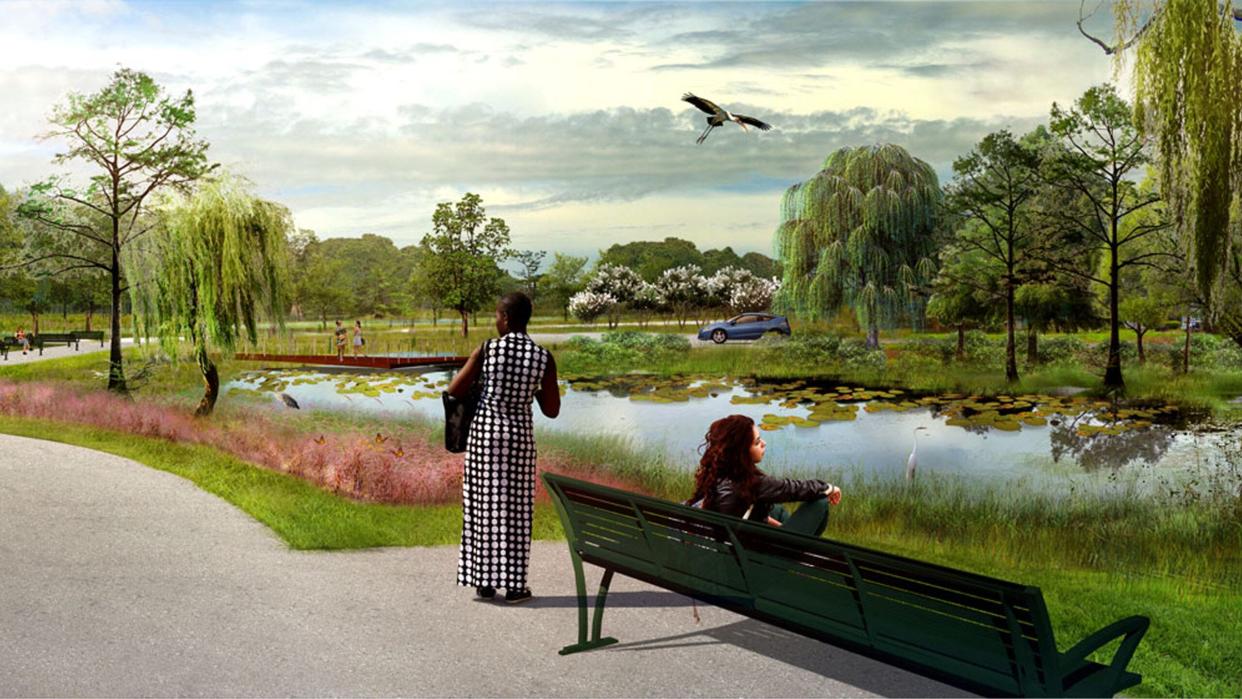Local climate activist: Jacksonville’s Emerald Trail a ‘transformative’ resiliency project

Jacksonville’s transformative Emerald Trail project — a 30-mile bike and pedestrian trail and greenway connecting 14 urban neighborhoods — includes expansive but unheralded environmental and climate resiliency benefits.
As people focus on the trail, often lost in public discussion is the restoration of two industrialized urban creeks. This work, which alone will cost well over $200 million, will turn these creeks from polluted and forgotten wastelands into ecological sanctuaries and parklands inside urban neighborhoods.
Last week was a milestone for the project, as the U.S. Department of Transportation awarded Jacksonville a $147 million grant to push the Emerald Trail forward. Indeed, that is the largest single-purpose grant ever awarded to the city.
Groundwork Jacksonville, the nonprofit that has been the driving force behind the trail, has guided the design of the creek restoration and worked with the city and the Jacksonville Transportation Authority.
Consider the history of McCoys Creek, which was channelized and bulkheaded in the 1920s to create an industrial canal to service several factories.
For various reasons the canal never succeeded as an industrial corridor, but the alternations to the creek remained, causing flooding and aggravating water pollution throughout a low-income and largely ignored minority neighborhood.
To add insult to injury, the city dumped garbage incinerator ash for decades along the creek’s banks. The ash, later deemed a hazardous waste, continues to be dredged out of the creek at a cost to the city of tens of millions of dollars.
The Emerald Trail plan will remove the channelization, restore much of the original winding riverbed and adjacent wetlands, and build a greenway park along a 3-mile stretch of the trail.
A forgotten wasteland will become a recreational hub, and a restored habitat for fish and birds. A minority neighborhood that the city has ignored for decades will reap the recreational and ecological reward, together with those who come to walk or bike the trail.
Finally, all that restored greenspace will help cool down an urban space sweltering under the heat island impact of a warming climate.
A similar restoration plan is being designed for Hogans Creek, which also suffered from channelization, industrial waste dumping and flooding of adjacent neighborhoods. Part of this restoration will bring back wetlands and rebuild an expressway overpass.
Letters: Aid to Ukraine must continue as a moral imperative and in U.S. best interest
The rebuilt overpass will open trail access to the restored creek and future greenway park. It will also restore fish and bird habitat within the city while reducing flooding. Imagine bird watching or kayaking in downtown Jacksonville along two creeks restored to a natural state.
More funding will be needed as the overall Emerald Trail project plows forward. The big picture? Jacksonville by 2030 will be well on its way to not only a world-class bike and pedestrian network, but a rebirth of nature across its urban core.

John Burr is the editor of the Jacksonville Climate Coalition newsletter and a board member of Groundwork Jacksonville. This column was distributed by The Invading Sea website, which posts news and commentary on climate change and other environmental issues affecting Florida.
This guest column is the opinion of the author and does not necessarily represent the views of the Times-Union. We welcome a diversity of opinions.
This article originally appeared on Florida Times-Union: Less flooding, more recreation access just some Emerald Trail benefits
